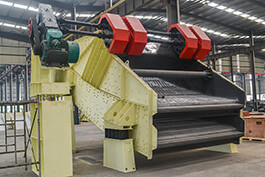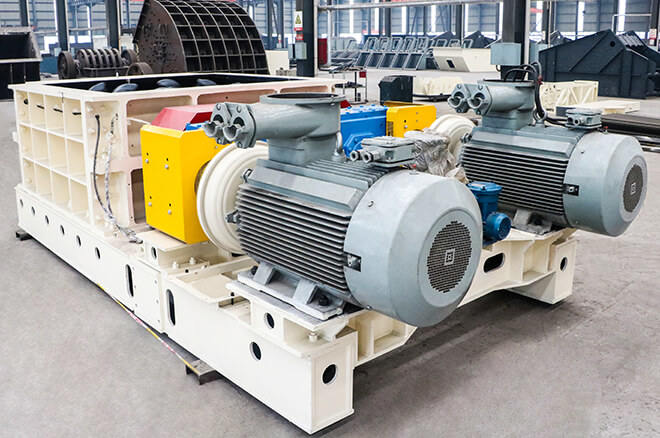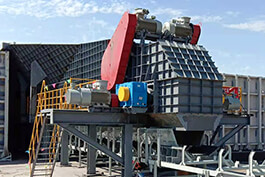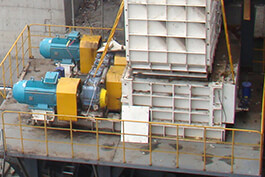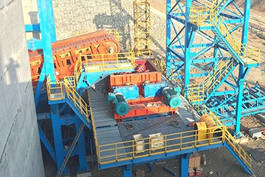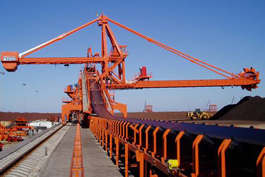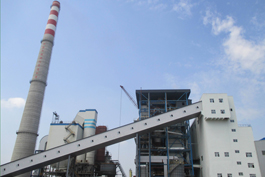1 Overview
Vibrating screen is the key equipment in industrial production, processing in line with the process requirements of
banana screen screen plate, for industrial and mining enterprises economic and reasonable operation, optimize production costs, reduce the labor intensity of workers has far-reaching significance. SUS304 stainless steel is widely used in various industries due to its high surface gloss and good corrosion resistance. Under special working environment, the screen plate must be processed using SUS304 stainless steel sheet.
2. Screen plate processing experiment
2.1 Sieve plate design
The sieve plate is designed according to the screening process requirements and the working environment and installation of the vibrating screen on site.
2.2 Plate processing
The final quality of the screen plate processing determines whether the vibrating screen can meet the screening process requirements, and affects the efficiency and overall accuracy of the vibrating screen. banana screen screen processing is characterized by thin plate, holes, easy to deformation, after processing can not produce magnetic conduction. The traditional cutting process means are flame cutting, plasma cutting, water knife cutting and wire cutting, etc., because of the high dimensional accuracy of the screen plate, the processing can only use CNC machine tools. The proposed three processing methods are: CNC machining center (or CNC drilling machine), CNC punching machine, CNC laser cutting machine.
In the machinery manufacturing plant, many precision machining needs to be processed in the CNC machining center, and the processing of the screen plate for a long time occupies the CNC machining center is not worth the loss; If the CNC punching machine is used to process the hole plate, the hole needs to be sent to the drilling machine for reaming after punching, and the secondary positioning reduces the position accuracy of the hole plate. Under existing conditions, laser cutting is the best choice. However, it is necessary to solve the problem that the hole cutting is not round and the hole plate deformation is large.
3 Choice of laser cutting technology
3.1 Carbon dioxide laser cutting technology
As the mainstream and traditional laser cutting and welding equipment, CO2 lasers are used, which can stably cut carbon steel within 20mm, stainless steel within 10mm, and aluminum alloy below 8mm. In the early days before the introduction of fiber lasers to the market, in order to achieve 3D processing, CO2 laser can be guided to the 3D curved surface by optical joint technology through a highly precise dynamic combined mirror system to achieve 3D processing of CO2 laser, but the price is expensive and the maintenance requirements are high, and the market share of fiber lasers has gradually expanded while it has gradually lost its market. According to international safety standards, the laser hazard rating is divided into 4 levels, and CO2 laser is the least harmful level.
3.2 Fiber laser cutting technology
Optical fiber laser can be transmitted through optical fiber, the degree of flexibility is unprecedented, especially for the automotive industry, because it is basically a sheet surface processing, optical fiber laser with the same flexible robot system, low cost, less fault points, easy maintenance, fast, has occupied most of the market. Because of the wavelength, it can only cut metal materials, and non-metals are not easily absorbed by it, thus affecting its cutting range. The photoelectric conversion rate of fiber laser is as high as more than 25%, while the photoelectric conversion rate of CO2 laser is only about 10%, and the advantages of fiber laser are quite obvious in terms of electricity consumption and supporting cooling systems. Fiber laser is the most harmful level because the wave length is harmful to the human eye, so the fiber laser processing is in a completely closed environment.
3.3 Laser cutting technology used for processing
banana screen screen plate
Considering the influence of laser cutting on the magnetic permeability of the hole plate ", while taking into account many factors such as processing accuracy, processing cost, location and geographical region, it is finally determined to use fiber laser cutting machine to batch process banana screen screen.
4 Existing problems and solutions
In the preliminary experiment, the main problems of laser cutting banana screen screen are: (1) When cutting small holes, it is oval; (2) After cutting, the sieve plate deformation is large and the flatness is not ideal.
4.1 Adjusting the roundness of small hole cutting
After telephone contact with the laser cutting machine manufacturer, the manufacturer replied: cutting speed, focus position adjustment, auxiliary gas pressure, laser output power are the main factors affecting the quality of laser cutting. From the operation of the fiber laser cutting machine used, the problem is that the focal length of the lens has drifted: the spot size after the laser beam is focused is proportional to the focal length of the lens, the spot size after the beam is focused by the short focal length lens is very small, and the power density at the focus is very high, which is advantageous for high-speed cutting thin materials; With the long-term operation of the equipment, the lens focus changes, and the small aperture is cut into an ellipse. After the manufacturer's technical personnel went to the scene to adjust, the problem that the hole plate was not round was solved.
4.2 Solving the problem of large deformation of banana screen screen
4.2.1 Cause Analysis
The whole stainless steel plate is placed on the working platform for cutting during the initial processing, which has the advantages of high efficiency and material saving. However, when the steel plate is locally heated, the heat is quickly transferred to the whole steel plate, and the whole area of the stainless steel plate is heated when the steel plate is cut at one place. Due to uneven heating everywhere, the amount of deformation is not the same, specific to a single sieve plate, always produce a large deformation after the completion of processing, the deformation of up to 3 mm.
4.2.2 Measures taken
(1) Flatten the screen plate after laser processing with a 100-ton hydraulic press, maintain a fixed oil pressure, and loosen the hydraulic press after 18 hours to remove the screen plate, and find that the screen plate returns to the original deformation state.
(2) In order to ensure the processing quality of the sieve plate, it is decided to cut in two steps. First, the whole steel plate is cut into small pieces, and then the small steel plate is bolted to the mold for laser cutting. See Figure 2 and Figure 3. The deformation of the screen plate after such processing is 1 to 2 mm, and the disadvantage is that the utilization rate of the steel plate is reduced, but the deformation degree of the finished product is greatly reduced.
(3) If the deformation of the sieve plate is controlled within 1 mm by mechanical processing, the processing cost is expected to rise sharply. When the
banana screen plate is actually installed on the vibrating screen, the bolts at the position of the mounting hole are tightened, and the screen plate is automatically levelled.
It is difficult to achieve the required results at low cost by relying only on a single machining method. Under the premise of fiber laser cutting technology, the flatness of the sieve plate is greatly improved by using the template as an auxiliary method. When the bolts are tightened during screen plate installation, the screen plate automatically adjusts its flatness to meet the flatness requirements of banana screen equipment.


.jpg)
